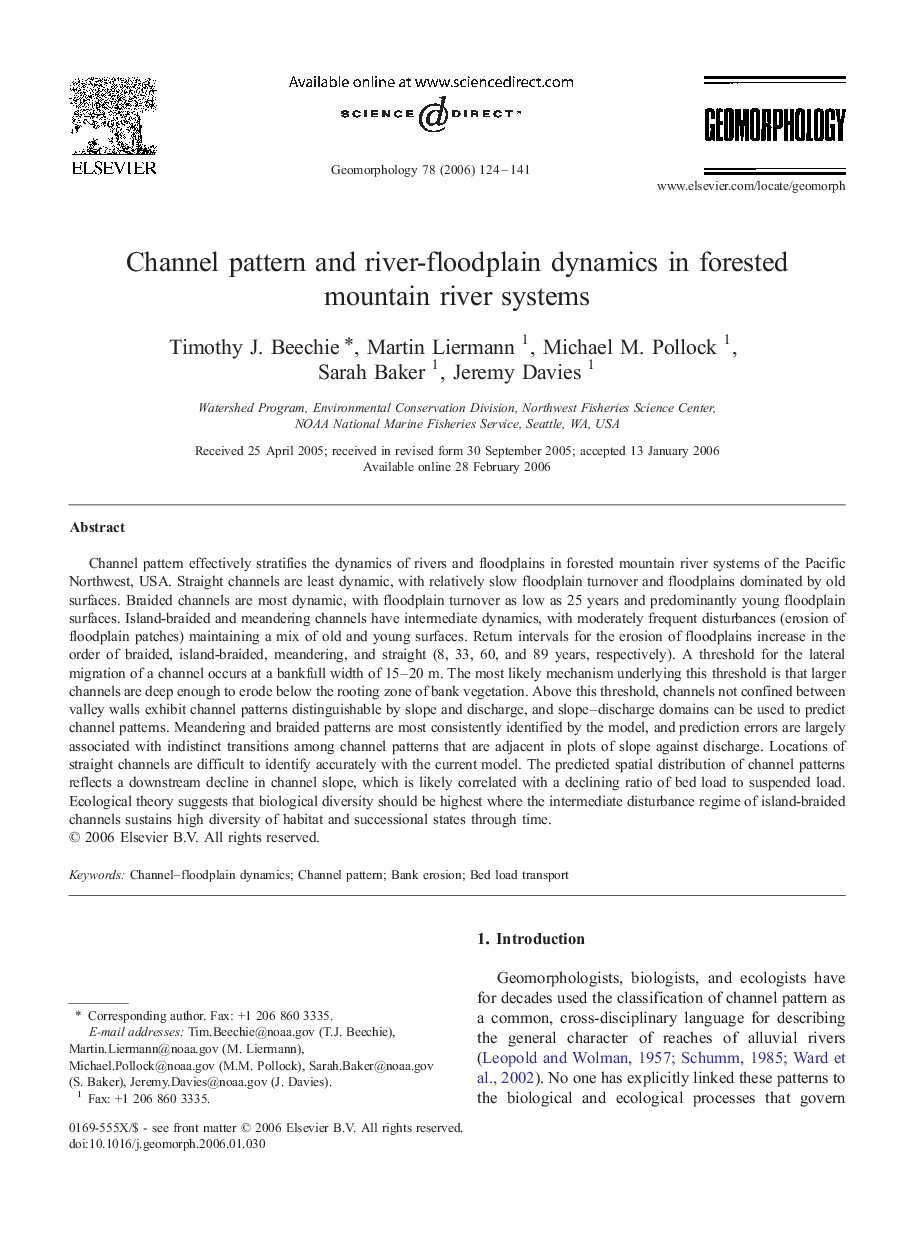| Article ID | Journal | Published Year | Pages | File Type |
|---|---|---|---|---|
| 4687625 | Geomorphology | 2006 | 18 Pages |
Channel pattern effectively stratifies the dynamics of rivers and floodplains in forested mountain river systems of the Pacific Northwest, USA. Straight channels are least dynamic, with relatively slow floodplain turnover and floodplains dominated by old surfaces. Braided channels are most dynamic, with floodplain turnover as low as 25 years and predominantly young floodplain surfaces. Island-braided and meandering channels have intermediate dynamics, with moderately frequent disturbances (erosion of floodplain patches) maintaining a mix of old and young surfaces. Return intervals for the erosion of floodplains increase in the order of braided, island-braided, meandering, and straight (8, 33, 60, and 89 years, respectively). A threshold for the lateral migration of a channel occurs at a bankfull width of 15–20 m. The most likely mechanism underlying this threshold is that larger channels are deep enough to erode below the rooting zone of bank vegetation. Above this threshold, channels not confined between valley walls exhibit channel patterns distinguishable by slope and discharge, and slope–discharge domains can be used to predict channel patterns. Meandering and braided patterns are most consistently identified by the model, and prediction errors are largely associated with indistinct transitions among channel patterns that are adjacent in plots of slope against discharge. Locations of straight channels are difficult to identify accurately with the current model. The predicted spatial distribution of channel patterns reflects a downstream decline in channel slope, which is likely correlated with a declining ratio of bed load to suspended load. Ecological theory suggests that biological diversity should be highest where the intermediate disturbance regime of island-braided channels sustains high diversity of habitat and successional states through time.
